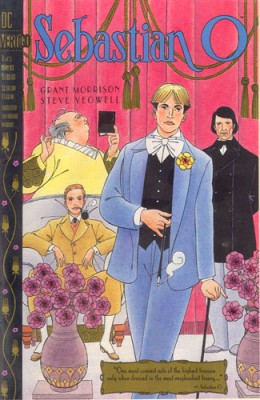Reviewer: Emera
Date read: 6.8.11
Book from: Personal collection
An ironic title: Carter’s take on “waywardness” and “wickedness” is far more subtle, of course. The women in this anthology – all written by women – are canny, worldly, self-directed. They are leery of others’ plans for them, and quietly attentive to their own desires – which is not to say that they are selfish, necessarily*, though they run the gamut when it comes to moral fiber. The mother in Elizabeth Jolley’s “The Last Crop” cheerfully cons a kindly doctor when she decides that she’d really rather keep and cultivate her inherited land after all. The women and girls in Jane Bowles’ “A Guatemalan Idyll” are capable of disturbingly calculated callousness – the youngest, Lilina, “[chooses] her toys according to the amount of power or responsibility she thought they would give her in the eyes of others.” The particular toy she considers in this story, a pet snake, ends up beheaded due to her (deliberate?) carelessness; Lilina’s only comment is, “Look how small her head is. She must have been a very small snake.”
(In a wonderfully horrible play with point of view, Bowles half-distracts us from the impending violence in this scene by shifting the perspective to another character just long enough for the snake’s death to occur in the interim. [The other character, a boy, is meanwhile observing that he dislikes Lilina “probably because he suspected intuitively that she was a person who could fall over and over again into the same pile of broken glass and scream just as loudly the last time as the first.”] The aggregation of such effects in this story left me strangely unsettled, and, like the visiting traveler who eventually “escapes” from the Guatemalan women, feeling like I’d awoken from a fever dream.)
I’ve gotten way off track – there’s so much to talk about in each story. Carter’s own point about the morality of these women, questionable or otherwise, is that the range represented is a normal one. The women here are well-characterized individuals, flawed and proud individuals of varying ages and desires and backgrounds, rather than one-note femmes fatales or whores or shrews. They frequently “act out” simply by resisting, by hunkering down and continuing to dig out their own paths. The protagonist of Ama Ata Aidoo’s “The Plums,” a Ghanaian student named Sissie who is touring in Europe, looks askance at the advances of a lonely German housewife, and in the end sloughs her off and keeps traveling. Throughout the story, she registers an ironic combination of pity and quiet contempt for the German woman and for whiteness in general, reflecting that “it must be a pretty dangerous matter, being white. It made you awfully exposed, rendered you terribly vulnerable. Like being born without your skin or something.” (The German woman’s son and husband are both named Adolf, it’s worth noting.) By contrast, Sissie goes through the story shielded, observing and untouched, sometimes even cruel, behind her armor of self-respect.
Continue reading Wayward Girls and Wicked Women, ed. by Angela Carter (1986) E



